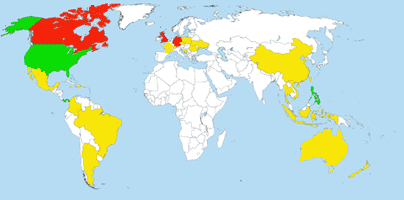Kurt Hanson over at the Radio and Internet Newsletter recently posted an insta-retrospective of the tenure of David Rehr as (former) President of the National Association of Broadcasters. The piece focuses on “possible errors” made by the NAB et. al. during Rehr’s reign. Number two on the list is HD Radio:
Unfortunately, it turns out that “going digital” in radio’s case is not going to happen via the distribution method of IBOC (In-Band On-Channel), but rather via the delivery mechanism of the Internet. Already the latter method has tens of millions of weekly listeners on PCs, plus millions more on smartphones (many in cars), while cumulative HD Radio sales are still under a million units. (And the gap is spreading.)
Radio’s effort to contain digitally-delivered radio to their scarce FCC-licensed frequencies has cost radio hundreds of millions of dollars in equipment upgrades — and, worse yet, more than $1 billion in wasted on-air promotion value.
And, meanwhile, most of the great Internet radio opportunities are being grabbed by outsiders….
Hanson’s missive was posted just days before the iBiquity Corporation announced its newest client in the global HD Radio portfolio – Panama. According to the Panamanian government, the country would like to go all-digital within 10 years; good luck with that, as there’s no functional, certified all-digital version of the HD protocol available yet.
 Just how much of a milestone is this? Using iBiquity’s own information, as well as publicly-available trade-press and national regulatory data, the map at right shows the score.
Just how much of a milestone is this? Using iBiquity’s own information, as well as publicly-available trade-press and national regulatory data, the map at right shows the score.
Countries in green indicate those where HD Radio has been certified as the digital audio broadcast (DAB) protocol-of-choice. These include the United States, the Philippines, and Panama.
Countries in red indicate those whose regulatory agencies have formally dismissed HD Radio as a viable digital radio protocol. These countries include Canada, the United Kingdom, and Germany.
Countries in yellow indicate those who have either engaged in some (usually rudimentary) level of testing of the HD Radio protocol, or, in a very few cases, have allowed its limited and conditional deployment (but have not formally committed to HD as the national DAB standard). These countries include Argentina, Australia, Bosnia, Brazil, China, Colombia, the Czech Republic, the Dominican Republic, France, Indonesia, Jamaica, Mexico, New Zealand, Poland, Romania, Switzerland, Thailand, the Ukraine, and Vietnam. In some of these instances, the tests were of limited duration and no further action has been taken by national regulators.
There’s a lot of white on the map. I didn’t color in those countries which have already chosen or are actively testing non-HD Radio broadcast standards (much of Asia and Western Europe, including countries like the UK and Germany). Much of the “industrialized world” is simply out of play. In addition, many countries (especially in Africa, eastern Europe, Latin America, and the Middle East) have simply not thought much about making a digital radio transition as of yet – analog works just fine for them for now, thanks.
For iBiquity to claim that it has a “global presence” equates in truth to a claim once made by the last U.S. president who justified an unjust war because it was backed by a “coalition of the willing.” No disrespect to its citizenry, but when Panama and the Philippines got your back, it’s not like you’re exactly poised to take over the world.
Skip to content